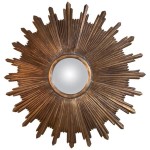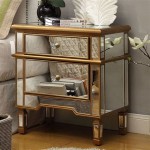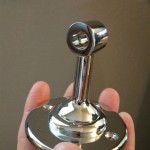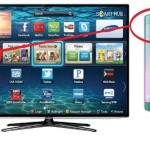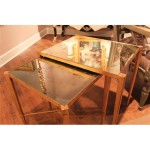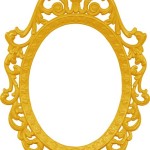How to Replace a Mirror on a Medicine Cabinet
A cracked, chipped, or otherwise damaged mirror on a medicine cabinet not only detracts from the overall aesthetic of a bathroom but can also pose a safety hazard. Replacing the mirror can revitalize the cabinet and restore functionality. This article provides a comprehensive guide on how to replace a mirror on a medicine cabinet, covering preparation, removal, installation, and safety considerations.
Preparation: Assessing the Damage and Gathering Supplies
Before initiating the replacement process, a thorough assessment of the damage is crucial. This involves identifying the extent of the crack or chip, noting the mirror's dimensions, and determining how the existing mirror is attached to the cabinet door. Common attachment methods include adhesive (glue or double-sided tape), clips, or a combination of both. Understanding the attachment method will dictate the tools and techniques required for removal.
Once the assessment is complete, gather the necessary supplies. These typically include:
*New Mirror: This is the most important element. Measure the existing mirror carefully (length, width, and thickness) to ensure the replacement mirror is an exact match. Consider the type of glass used; annealed glass is standard, while tempered glass is more durable and shatters into smaller, less dangerous pieces if broken. Tempering is often a worthwhile investment, particularly in high-traffic areas.
*Safety Glasses: Protect eyes from flying glass shards during removal.
*Work Gloves: Provide a better grip and protect hands from cuts and abrasions.
*Putty Knife or Scraper: Used to carefully detach the old mirror from the cabinet door, especially if adhesive is involved.
*Heat Gun or Hair Dryer (Optional): Can help soften adhesive for easier removal.
*Solvent (e.g., Mineral Spirits, Acetone, or Goo Gone): Used to remove residual adhesive from the cabinet door. Test the solvent in an inconspicuous area first to ensure it doesn't damage the finish.
*Clean Rags or Paper Towels: For cleaning surfaces and wiping away excess solvent.
*Measuring Tape: To verify the dimensions of the new mirror and aid in proper placement.
*Pencil or Marker: For marking placement guidelines.
*Mirror Adhesive: Specifically designed for bonding mirrors to surfaces without damaging the reflective backing. Avoid using construction adhesive, as it may contain chemicals that can degrade the mirror's coating.
*Caulk Gun (If Using Tube Adhesive): For applying the mirror adhesive neatly and evenly.
*Mirror Clips (If Needed): If the original mirror used clips, ensure you have replacement clips available. If adding clips, select clips appropriate for the mirror's thickness.
*Level: To ensure the new mirror is installed straight.
*Painter's Tape: To hold the mirror in place while the adhesive cures.
Removal: Safely Detaching the Old Mirror
The removal process requires caution to prevent injury and further damage to the cabinet. Begin by covering the work area with a drop cloth or newspaper to protect surrounding surfaces from glass shards and adhesive residue.
Step 1: Protective Gear. Put on safety glasses and work gloves.
Step 2: Initial Detachment. If the mirror is secured with clips, carefully remove them using a screwdriver or pliers. If adhesive is present, gently insert a putty knife or scraper between the mirror and the cabinet door, working along the edges. If the adhesive is particularly stubborn, use a heat gun or hair dryer to warm the adhesive, making it more pliable. Apply heat in short bursts to avoid overheating the mirror or damaging the cabinet door's finish.
Step 3: Gradual Separation. Slowly and carefully pry the mirror away from the cabinet door, working gradually around the perimeter. Avoid applying excessive force, as this could cause the mirror to shatter. If resistance is encountered, apply more heat or use a solvent to soften the adhesive further. Patience is key to a clean and safe removal.
Step 4: Adhesive Removal. Once the mirror is removed, clean the cabinet door surface to remove any residual adhesive. Apply the chosen solvent to a clean rag and gently rub the adhesive until it softens and can be wiped away. Multiple applications may be necessary for stubborn residue. Ensure the cabinet door surface is completely clean and dry before proceeding to the installation stage.
Step 5: Disposal. Carefully wrap the broken mirror in several layers of newspaper or cardboard and secure it with tape. Label the package clearly as "Broken Glass" to prevent injury to sanitation workers.
Installation: Properly Securing the New Mirror
With the old mirror removed and the cabinet door prepared, the installation of the new mirror can begin. This process requires precision and attention to detail to ensure a secure and aesthetically pleasing result.
Step 1: Dry Fit. Before applying any adhesive, perform a dry fit of the new mirror to ensure it fits properly within the cabinet door frame. Check for any gaps or misalignment and make any necessary adjustments.
Step 2: Marking Placement. Using a measuring tape and pencil, mark the desired position of the mirror on the cabinet door. These marks will serve as a guide during the adhesive application and placement process. Ensure the mirror is centered and aligned properly.
Step 3: Applying Adhesive. Apply mirror adhesive to the back of the new mirror in a consistent pattern. A common method is to apply several vertical beads of adhesive, spaced a few inches apart. Avoid applying adhesive too close to the edges of the mirror, as it may squeeze out when the mirror is pressed against the cabinet door. Consult the adhesive manufacturer's instructions for specific application recommendations.
Step 4: Placing the Mirror. Carefully align the new mirror with the placement marks on the cabinet door. Gently press the mirror against the surface, ensuring it is firmly seated. Use a level to check that the mirror is straight. Make any necessary adjustments before the adhesive begins to set.
Step 5: Securing the Mirror. Use painter's tape to secure the mirror in place while the adhesive cures. Apply strips of tape across the mirror and onto the cabinet door, providing adequate support. If using mirror clips, install them according to the manufacturer's instructions, ensuring they are properly positioned to hold the mirror securely.
Step 6: Curing Time. Allow the adhesive to cure completely according to the manufacturer's instructions. This typically takes 24 to 48 hours. Avoid disturbing the mirror during the curing process.
Step 7: Final Check. Once the adhesive is fully cured, remove the painter's tape and inspect the installation. Ensure the mirror is securely attached and properly aligned. Clean the mirror surface with a glass cleaner to remove any fingerprints or smudges.
By following these steps, a damaged mirror on a medicine cabinet can be effectively and safely replaced, restoring both the functionality and appearance of the bathroom.

Bathroom Medicine Cabinet Mirror Replacement Doityourself Com Community Forums

How To Install A Mirrored Medicine Cabinet Vanity Light

How To Replace A Medicine Cabinet Mirror Doityourself Com

How To Replace A Broken Bathroom Mirror

Frame Update To Medicine Cabinet Atop Serenity Hill Bathroom Mirrors Diy Mirror

How To Replace A Bathroom Mirror Medicine Cabinet Featured Finehomesandliving Com

Updating A Brass Medicine Cabinet Flashback Friday The Kim Six Fix

Poor Man S Diy Bathroom Renovation Part 3 Medicine Cabinet Mirror

Replace Mirror In Medicine Cabinet With Artwork Stay At Home Ista Art The Stylish Bathroom Trendy Diy Storage

Easily Replace An Old Medicine Cabinet Wg Wood S
